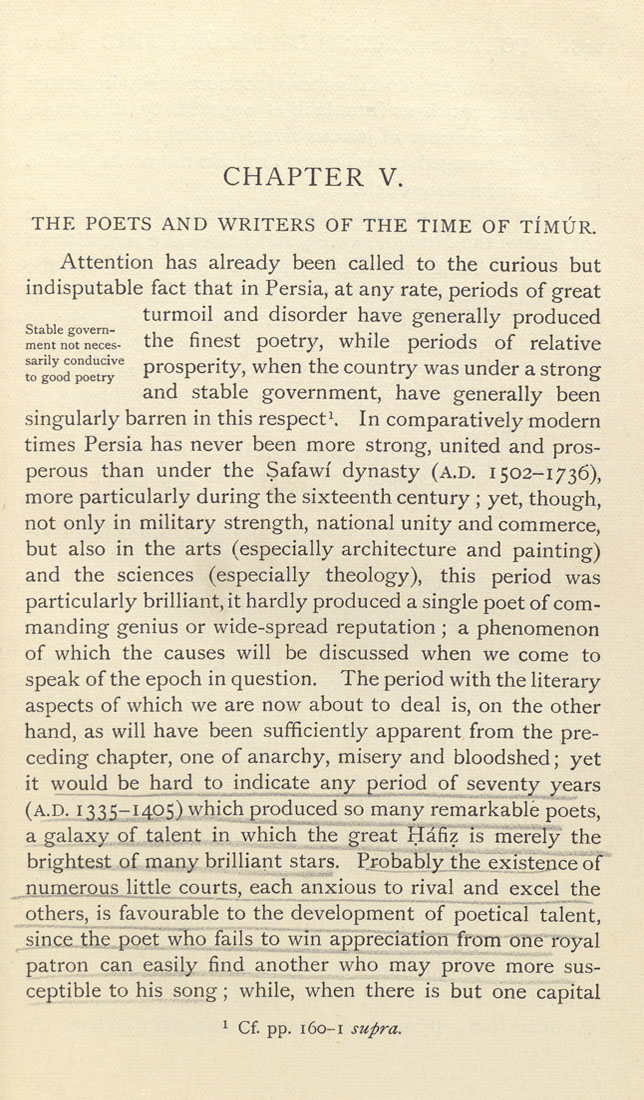CHAPTER V.
THE POETS AND WRITERS OF THE TIME OF TIMUR.
Attention has already been called to the curious but
indisputable fact that in Persia, at any rate, periods of great
turmoil and disorder have generally produced
me^ntn!tTecTs- the finest poetry, while periods of relative
tTgo^od'poeTry' pfosperlty, when the country was under a strong
and stable government, have generally been
singularly barren in this respects In comparatively modern
times Persia has never been more strong, united and pros¬
perous than under the Safawi dynasty (A.D. 1502-1736),
more particularly during the sixteenth century ; yet, though,
not only in military strength, national unity and commerce,
but also in the arts (especially architecture and painting)
and the sciences (especially theology), this period was
particularly brilliant, it hardly produced a single poet of com¬
manding genius or wide-spread reputation ; a phenomenon
of which the causes will be discussed when we come to
speak of the epoch in question. The period with the literary
aspects of which we are now about to deal is, on the other
hand, as will have been sufficiently apparent from the pre¬
ceding chapter, one of anarchy, misery and bloodshed; yet
it would be hard to indicate any period of seventy years
(A.D. 1335-1405) which produced so many remarkable poets,
a galaxy of talent in which the great Hafiz is merely the
brightest of many brilliant stars. Probably the existence of
num^rQiis little courts, each anxious to rival and excel the
others, is favourable to the development of poetical talent,
since the poet who fails to win appreciation from one royal
patron can easily find another who may prove more sus¬
ceptible to his song; while, when there is but one capital
^ Cf pp. 160-1 supra.
|








